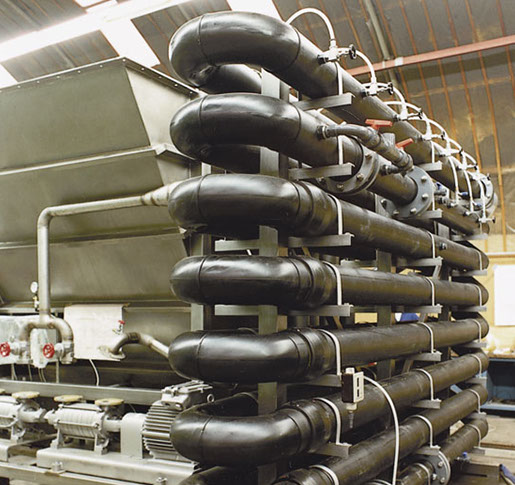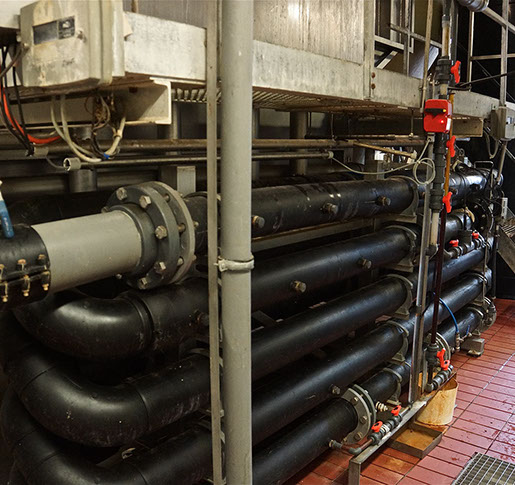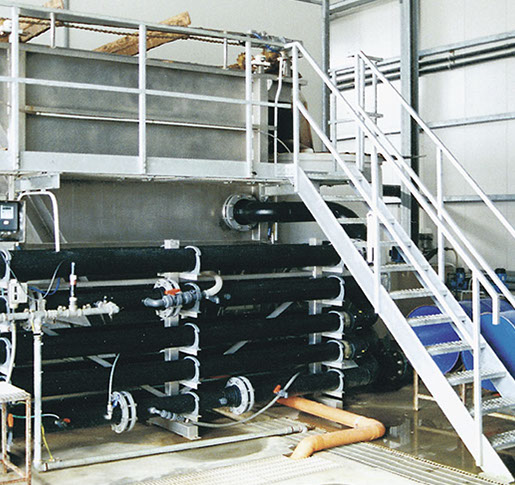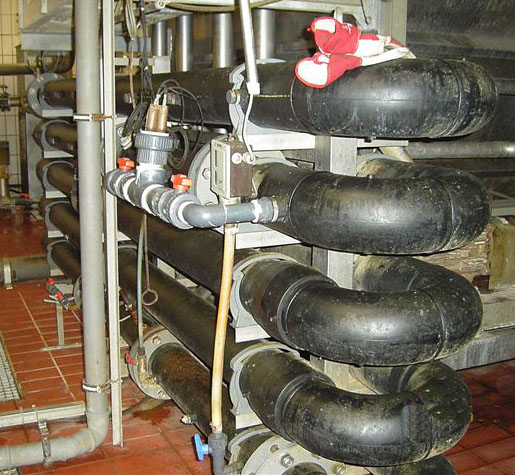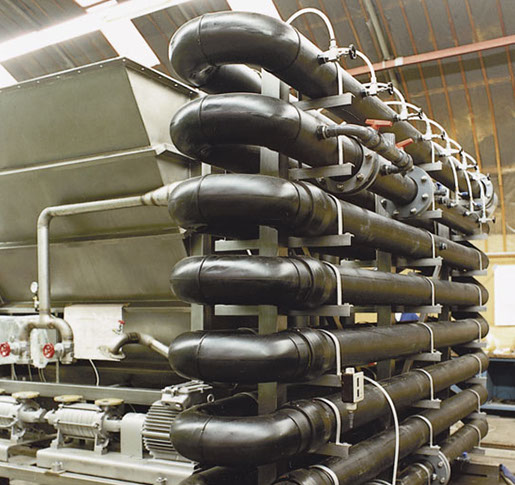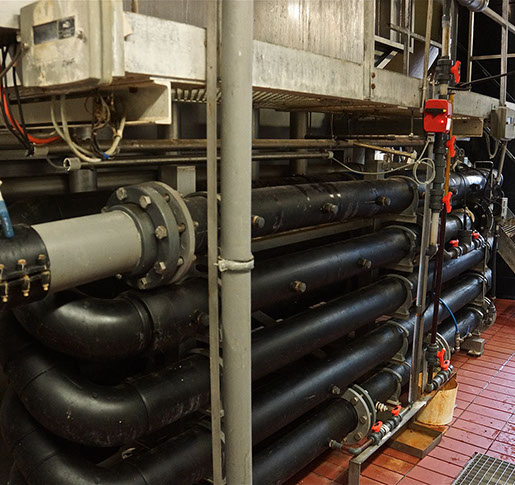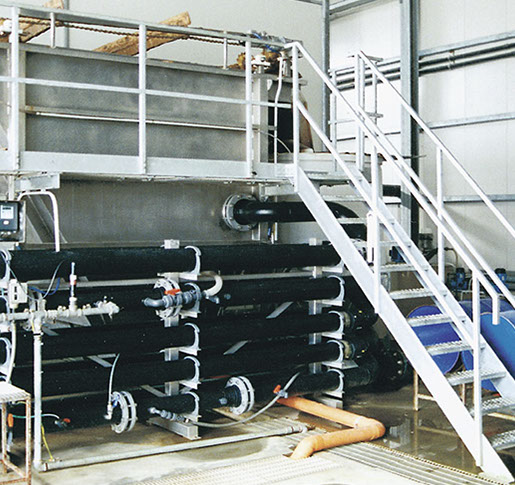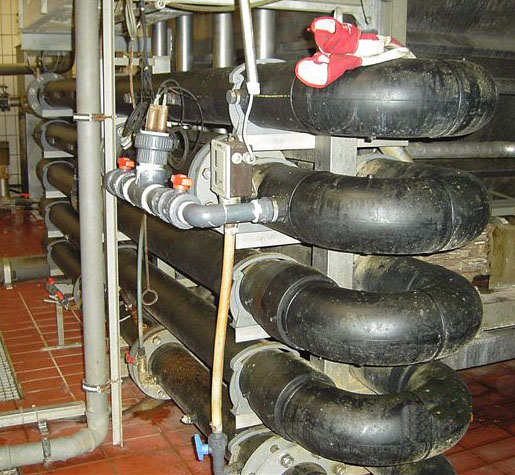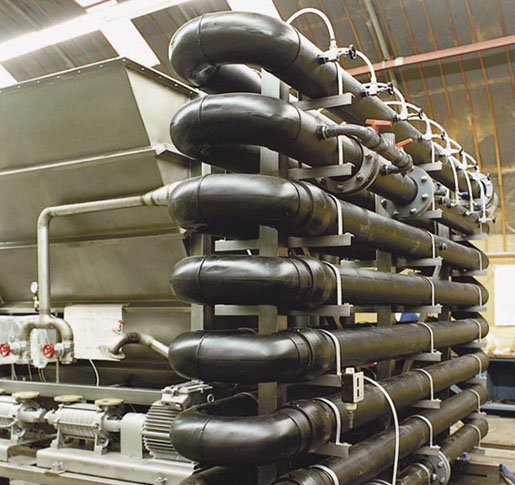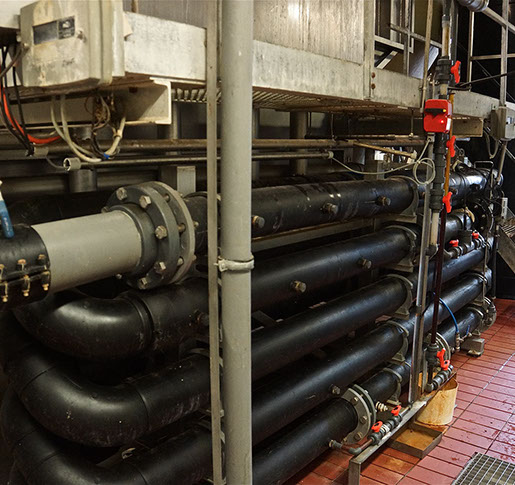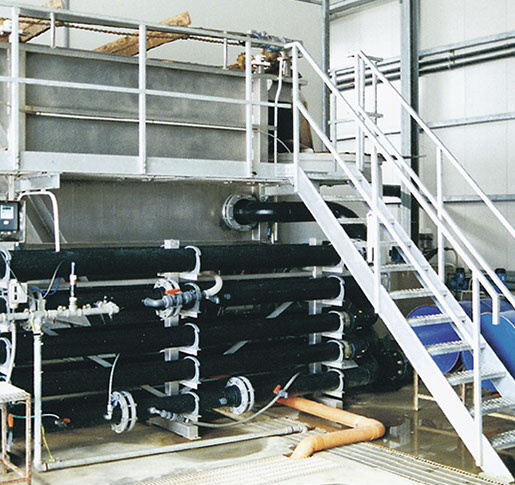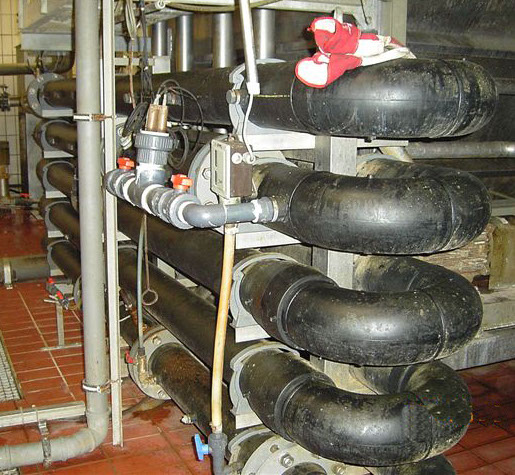
Delivery programme
Pipe flocculator PPF
Suspended solids, colloids, and dissolved substances may be in wastewater. In their typical present form, suspended solids and colloids can’t be separated from the wastewater, and thus have to be converted into a separable form first. This is done in a flocculator. The pH value can also be measured and adjusted at the same time.
Operating principle
First, a coagulant and precipitant are fed into the inlet. Soluble substances are converted into an insoluble, particulate form in the water due to a chemical reaction. Through dosing polyelectrolyte (flocculants), the particles agglomerate into sedimentable or floatable flakes.
The pH value in the acidic area changes due to adding the coagulant. This is measured automatically and corrected to the desired pH value by adding a sodium hydroxide solution, generally. This occurs before adding the flocculant.
Features
The Planotex flocculator is a plug flow pipe flocculator, consisting of a pipe with a specific length and diameter. The retention time and mixing energy are equal at any given cross-section of the pipe. This subjects all particles to the same mixing power and reaction time. This results in a uniform flake with very good separation characteristics.
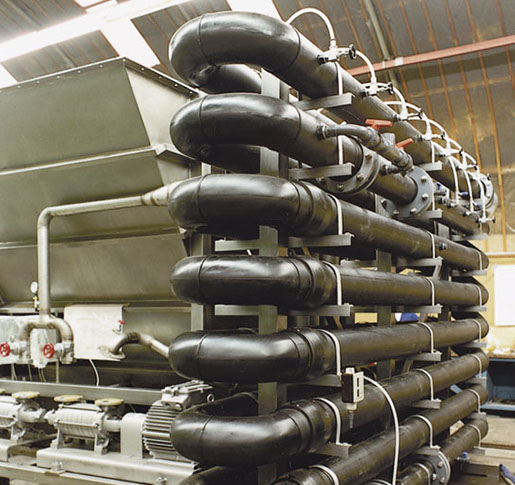
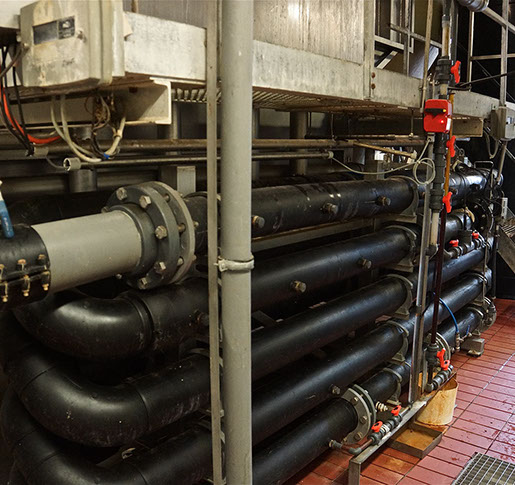
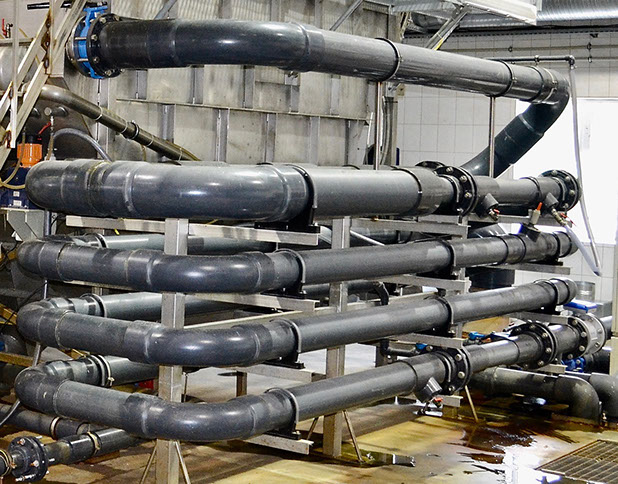
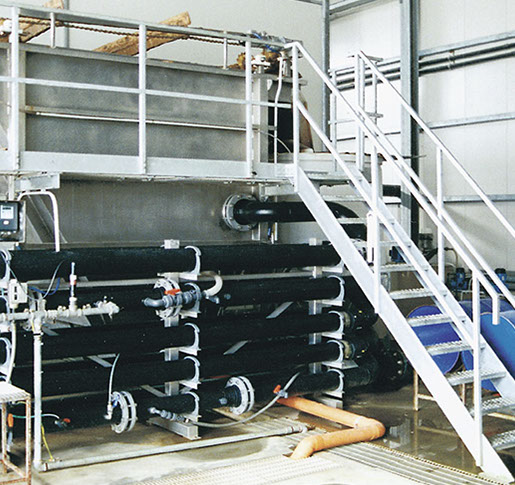
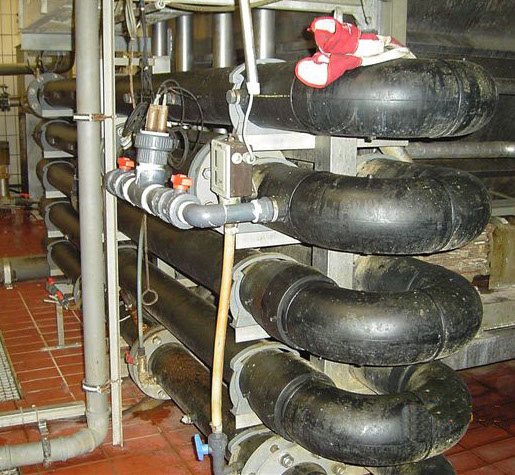





back
